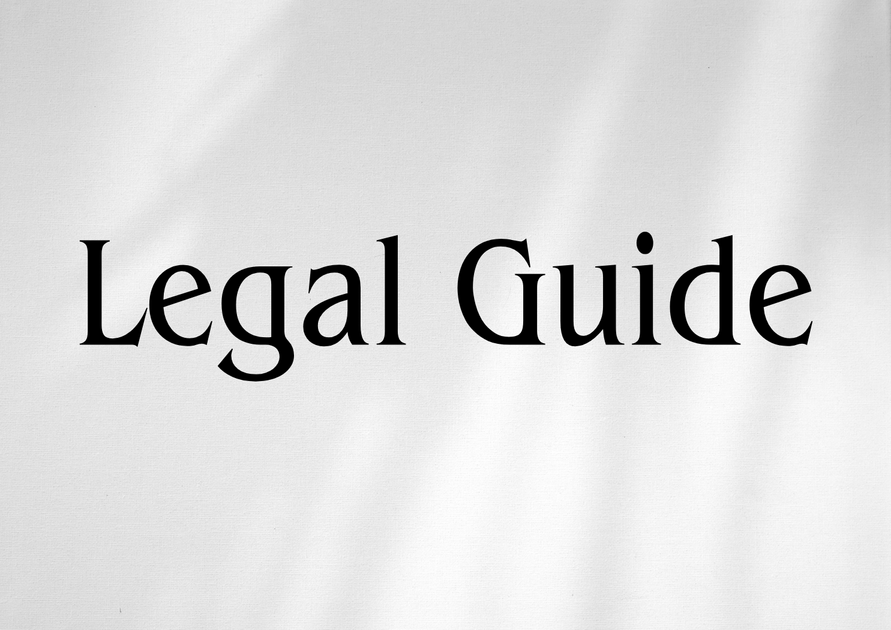Introduction: The Strategic Importance of AI Source Code Protection in the UAE
As the United Arab Emirates forges ahead as a global leader in artificial intelligence innovation, safeguarding AI source code has become a paramount concern for technology-driven businesses, multinational corporations, and investors in the UAE. Source code is the backbone of every AI system, revealing the logic, methodology, and unique competitive edge of any advanced software solution. In light of the UAE’s ambitious 2031 AI Strategy and its extensive legal reforms aimed at attracting investment and fostering a knowledge economy, robust legal strategies for AI source code protection are more critical than ever.
This article delivers a consultancy-grade analysis of legal mechanisms to protect AI source code in the UAE. It offers a clear and practical pathway for companies seeking to mitigate risks, leverage the latest legislative developments—including recent amendments to the UAE’s intellectual property and cybercrime laws—and ensure full legal compliance. Our insights equip senior executives, in-house counsel, technology entrepreneurs, and HR managers with actionable guidance and the confidence to navigate the UAE’s evolving legal landscape for AI innovation.
Table of Contents
- Overview of the Legal Framework for AI Source Code Protection in the UAE
- Copyright and Patent Protection for AI Source Code
- Trade Secrets and Confidentiality Measures in the UAE
- Technology Transfer and Employee Mobility Risks
- Compliance Under UAE IP and Cybercrime Laws (2023–2025 Updates)
- Contractual Strategies and Customised Protections
- Risks of Non-Compliance and Penalties: Key Considerations
- Practical Steps and Best Practices for Effective Source Code Protection
- Conclusion and Forward-Looking Perspectives
Overview of the Legal Framework for AI Source Code Protection in the UAE
The UAE’s Multi-Layered Approach to Source Code Protection
AI source code can constitute a valuable intellectual property asset, core business secret, and a target for cyber-espionage or employee misappropriation. The UAE implements a multi-layered legal framework addressing these risks through:
- Copyright laws governing code as a literary work.
- Patent protection for AI-related inventions and algorithms.
- Trade secret regulations and obligations of confidentiality.
- Criminal law penalties for data breaches, cyber-intrusions, and IP theft.
- Labour law provisions covering employee inventions and post-employment restrictions.
The UAE’s regulatory ecosystem is designed to balance innovation with investor protection, align with global standards (such as WIPO and TRIPS), and promote a climate of trust for technology-driven sectors. The most significant legal sources for AI source code protection include:
- Federal Decree-Law No. 38 of 2021 on Copyrights and Neighbouring Rights (as amended 2021–2023)
- Federal Law No. 11 of 2021 on the Regulation and Protection of Industrial Property Rights (Patents Law)
- Federal Decree-Law No. 34 of 2021 on Combatting Rumours and Cybercrimes (Cybercrime Law)
- Federal Decree-Law No. 33 of 2021 on the Regulation of Labour Relations (Labour Law 2022), and Ministerial Resolutions addressing confidentiality and inventions
- UAE Cabinet Decisions on Technology Transfer and National AI Policy 2031
Copyright and Patent Protection for AI Source Code
Copyright Protection for Software Code: Current Legal Position
Under UAE Copyright Law (Federal Decree-Law No. 38 of 2021), source code—whether for AI or traditional software—qualifies as a protectable “literary work.” This ensures automatic protection upon creation, provided the code displays originality and is fixed in tangible form. Registration of software code with the UAE Ministry of Economy is highly recommended, as it formalizes ownership, strengthens evidence in legal disputes, and facilitates law enforcement action in the event of infringement.
| Aspect | Pre-2021 Law | Post-2021 Law (Current) |
|---|---|---|
| Automatic Protection | Yes, limited clarity for software | Explicit inclusion of software, AI code now expressly covered |
| Duration of Protection | Life of author plus 50 years | Unchanged |
| Registration Recommendations | Optional | Highly encouraged, stronger enforcement tools |
| Penalties for Infringement | Fine and possible imprisonment | Increased fines and expedited procedures under Federal Decree-Law No. 38 of 2021 |
Patent Protection for AI Innovations
For AI-related inventions involving novel, inventive, and industrially applicable algorithms or systems, patent protection under Federal Law No. 11 of 2021 may be available. It is critical to distinguish pure source code (not patentable) from code that operationalizes an inventive process or technical solution (potentially patentable).
- Patentable Elements: Unique AI algorithms, neural network architectures, or technical processes embedded in code.
- Non-Patentable Elements: Abstract ideas, mathematical methods, or mere computer code listings.
For robust legal coverage, companies should seek patent protection for AI inventions, while simultaneously asserting copyright over the source code’s structure, documentation, and underlying creative choices.
Consultancy Insight: Copyright and Patent Complementarity
It is a best practice for UAE-based businesses to dual-register copyright and, where eligible, seek patent protection for core AI functionalities. This creates a multi-layered defence, deterring competitors and expediting enforcement actions in case of infringement. Registration with the UAE Ministry of Economy is fast, cost-effective, and essential for demonstrating ownership in court or regulatory proceedings.
Trade Secrets and Confidentiality Measures in the UAE
Legal Framework for Trade Secrets in the UAE
The UAE has strengthened trade secret protection as part of its commitment to global IP frameworks. AI source code, if not otherwise disclosed or registered, can be defended as a trade secret provided it is subject to effective secrecy measures, has commercial value, and is not generally known in the industry.
- Relevant Law: Federal Decree-Law No. 31 of 2021 (Penal Code), Articles 432–434, and Cabinet Decision No. 36 of 2022 on Trade Secrets (implementing WIPO standards).
Trade secrets receive both civil and criminal protection, allowing businesses to pursue injunctions and damages—and in serious cases, trigger criminal prosecution for misappropriation, especially if competitive harm is proven.
Implementing Effective Confidentiality Safeguards
- Restrict code access through secure repositories and role-based authentication.
- Enter robust, carefully drafted non-disclosure agreements (NDAs) with all employees, contractors, and vendors.
- Regularly train staff on confidentiality obligations, especially upon onboarding and offboarding.
- Implement monitoring tools to detect and prevent unauthorized code extraction or leaks.
Case Study: Enforcement of Trade Secrets—Code Misappropriation
Consider a UAE-based AI company where a departing software engineer downloads critical source code before joining a competitor. If the company has:
- Registered its copyright and patents, and
- Implemented comprehensive NDA and digital tracking systems,
It can pursue urgent civil remedies (court-ordered injunction to prevent use or disclosure, damages claim) and report criminal breach to the authorities, leveraging the elevated penalties set forth under UAE Penal Code revisions and the Cybercrime Law (see below).
Technology Transfer and Employee Mobility Risks
Restricting Post-Employment Use and Disclosure of AI Source Code
The 2022 UAE Labour Law (Federal Decree-Law No. 33 of 2021) modernised key aspects of employee mobility, inventions, and post-employment competition. While striving to safeguard the employee’s right to work, the law allows companies to impose legitimate restrictions to protect confidential source code and other proprietary assets.
- Employment contracts must articulate explicit confidentiality and inventions clauses, specifying that source code created during employment belongs to the employer, with clarity on post-termination obligations.
- Non-compete clauses are valid if narrowly defined—reasonable in duration, geographic scope, and limited to relevant activities—and must be enforceable under Ministerial Resolution No. 46 of 2022.
- Employers may register “employee inventions” for up to two years post-termination, protecting code and AI innovation even after the employee exits.
Technology Transfer Regulations and Compliance
The UAE Cabinet Decision on Regulating Technology Transfer (No. 21 of 2021) establishes clear controls for cross-border sharing and commercialization of sensitive AI source code. This applies to companies exporting or licensing source code to foreign affiliates, JV partners, or customers. Technology transfer agreements must:
- Define confidential scope and control mechanisms over code dissemination.
- Comply with local export controls and international data sovereignty mandates.
- Include dispute resolution, inspection, and termination provisions tailored to UAE law.
Compliance with IP and Cybercrime Laws: 2023–2025 Updates
Civil and Criminal Enforcement of Source Code Rights
With the UAE’s digital economy accelerating, the legal environment for IP and cybercrime enforcement has grown more sophisticated and punitive, especially as per the latest updates:
| Offence | Pre-2021 Penalty | Post-2021/2023 Penalty (Current Law) |
|---|---|---|
| Unauthorized Use or Copying of Source Code | Fines, moderate jail terms | Up to AED 1 million fine, enhanced jail terms (Federal Decree-Law No. 38 of 2021) |
| Cyberattack or Hacking of Code | Up to AED 500,000 fine | Up to AED 3 million fine and significant prison term (Federal Decree-Law No. 34 of 2021) |
| Disclosure of Trade Secrets (Employees, Contractors) | Fines, possible termination | Criminal prosecution, up to 2 years prison, heavier fines as per Cabinet Decision No. 36 of 2022 |
| Failure to Register Copyright/Patent | No direct penalty but weak enforcement | Enforcement and compensation significantly more achievable if registered |
Recent legal amendments reflect the UAE’s intent to establish deterrence, protect digital innovation, and align with best-in-class international norms on cyber-IP risk management.
Illustrative Example: Cybercrime Response Scenario
Suppose an AI company discovers a cyber-intrusion resulting in the theft and online circulation of proprietary source code. The firm can utilize the newly streamlined emergency measures under the Cybercrime Law (Decree-Law No. 34 of 2021) to swiftly report to authorities, trigger criminal investigations, and secure urgent take-down orders for infringing content, provided legal registration and digital forensics evidence are in place.
Contractual Strategies and Customised Protections
Drafting Effective Source Code Protection Clauses
Bespoke contractual protections are indispensable to reinforce statutory rights. A comprehensive contractual strategy should cover:
- Detailed Confidentiality and Non-Disclosure Provisions: Clearly define what constitutes protected source code, including internal documentation, training data, and derived works.
- Audit and Access Rights: Empower the rights-holder to monitor, audit, and restrict code access, even among partners and third-party vendors.
- IP Ownership Acknowledgement: Specify that all code developed in the course of employment or partnership is solely owned by the company, supported by assignment and waiver clauses.
- Non-Compete and Non-Solicit Clauses: Restrict ex-employees or partners from utilizing or soliciting knowledge for rival AI systems.
- Dispute Resolution Mechanism: Insert UAE law as the applicable law and opt for UAE-based arbitration for swift, cost-effective resolution.
Sample Compliance Checklist Table
| Compliance Area | Status | Recommended Actions |
|---|---|---|
| Copyright Registration | In Progress/Complete | Register code with Ministry of Economy |
| Patent Application, If Eligible | Pending/Filed | Assess patentability and file early |
| Confidentiality Agreements | Active/Needs Update | Review and re-issue all NDAs |
| Cybersecurity Measures | Partially Implemented | Conduct risk assessment, enhance access controls |
| Employee/Contractor Training | Ongoing | Schedule periodic legal briefings and onboarding modules |
Risks of Non-Compliance and Penalties: Key Considerations
Legal and Commercial Consequences
The principal risks associated with inadequate source code protection in the UAE include:
- Irretrievable loss of competitive advantage: Competitors may rapidly replicate or enhance products using misappropriated AI code.
- Loss of legal recourse: Unregistered or poorly documented code weakens litigation or enforcement options.
- Criminal and civil liability exposure: Lax controls or disregard for regulatory requirements may trigger lawsuits, criminal action, and negative press, undermining investor confidence.
- Regulatory scrutiny: The UAE authorities are empowered to order workplace inspections, freeze assets, and impose business restrictions in cases of severe or repeated violations.
Penalty Schedule Visual Suggestion
Placement of a penalty comparison infographic is recommended, showing key offences, corresponding fines, and potential criminal sentences for quick executive reference.
Practical Steps and Best Practices for Effective Source Code Protection
Recommended Strategies for UAE Businesses
To ensure comprehensive protection of AI source code, UAE companies and their legal advisors should implement the following best practices:
- Early Registration: Register copyright and file patents (if applicable) with the Ministry of Economy as soon as code is developed or commercial deployment is considered.
- Multi-Level Contracts: Implement a suite of NDA, inventions, assignment, and non-compete clauses in all employment, contractor, and partnership agreements.
- Digital Security Controls: Deploy advanced source code management solutions (version control, access logs, encryption) and conduct regular cyber-risk audits.
- IP Audit and Compliance Reviews: Perform periodic legal audits to identify vulnerabilities, verify adherence to regulatory and contractual obligations, and keep policies current with legal changes.
- Incident Response Planning: Establish pre-approved protocols for detecting, investigating, and responding to suspected code breaches, including rapid notification to UAE authorities and coordinated public relations.
- Staff Awareness Training: Institute mandatory briefings and annual trainings on the importance of source code confidentiality and the consequences of breaches.
Process Flow Diagram Visual Suggestion
We recommend adding a process flowchart detailing the end-to-end AI source code protection lifecycle—from development and registration, to internal access management, contractual protections, and enforcement steps in event of breach.
Conclusion and Forward-Looking Perspectives
The UAE’s legal regime for protecting AI source code has undergone significant modernization, aligning with international best practices while introducing a distinctively robust enforcement architecture. As the UAE presses forward with its AI and digital economy vision—backed by landmark legislation, a pro-innovation judiciary, and ambitious government initiatives—legal protection of proprietary source code will be central to sustainable success.
Clients are advised to maintain proactive legal and operational vigilance: monitor updates to UAE IP and cybercrime statutes, seek regular legal review of internal controls, and invest in tools and agreements tailored to their business model and risk appetite. The next decade will likely see even tighter integration of cyber, labour, and commercial law—alongside enhanced regulatory oversight of AI technologies.
By taking a comprehensive, legally astute, and technology-enabled approach, UAE businesses can unlock the immense value of AI while remaining fully aligned with the country’s world-class legal standards and global innovation ambitions.




